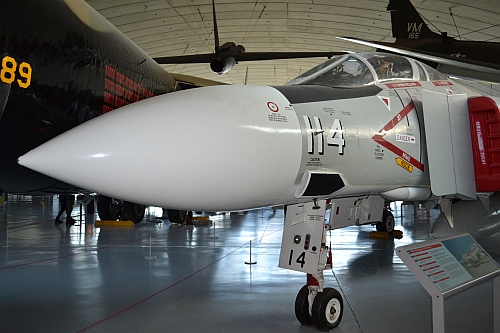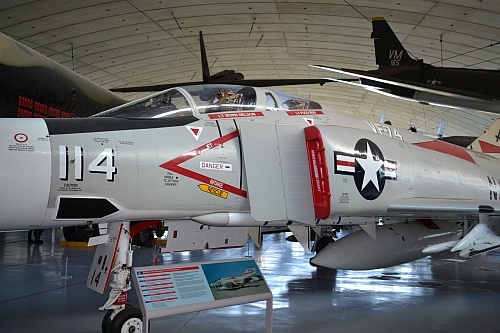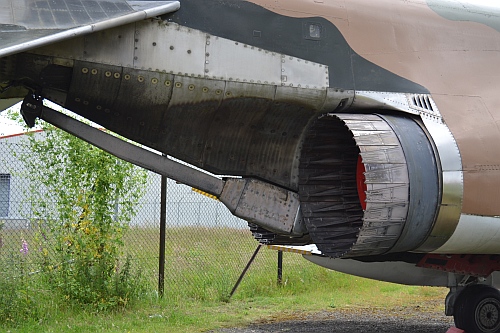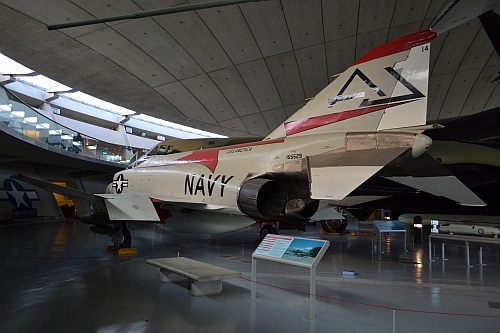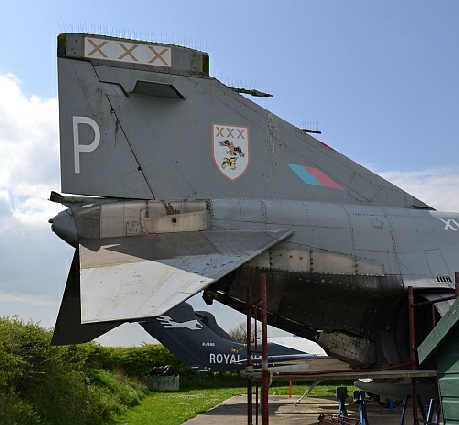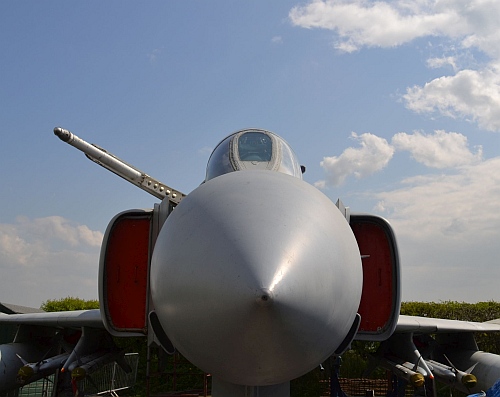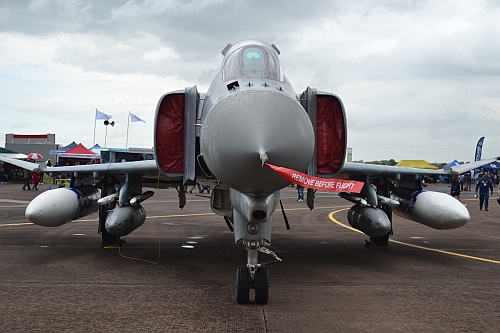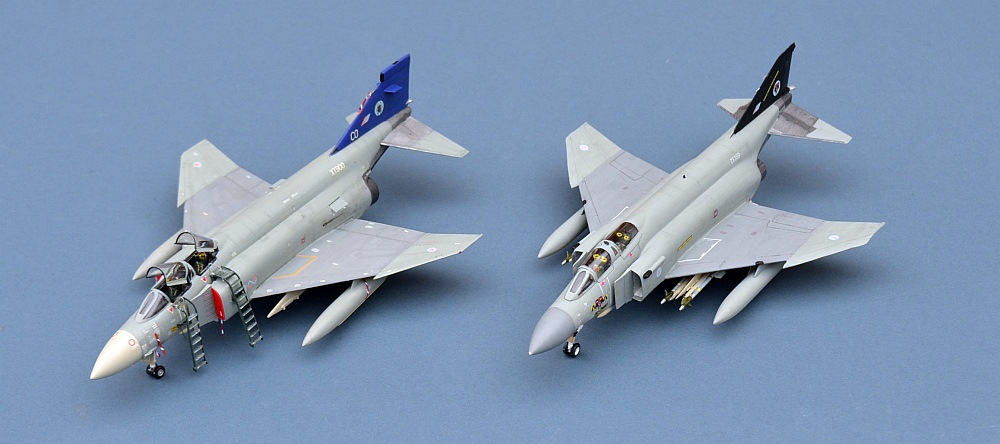July 2020
Phantom FGR.2
Phantom F-4J (UK)
Link to Website Index: 
McDonnell-Douglas Phantom FGR.2
228 OCU / 64 Sqn, RAF Leuchars, 1987
Fujimi 1/72 with Modeldecal markings and Flightpath crew ladders

Link to Website Index: 
The Phantom was one of the truly outstanding Cold War military aircraft. First flying
in 1958, it continues in service today (2020) with the Iranian, Greek, Turkish, Japanese
and South Korean air forces, some 62 years after it first flew. The F-4, or F4H-1
to use its original designation, was designed as a carrier-borne all-weather fighter-bomber
with a primary role of Fleet Defence interceptor. It was quickly adopted by the
US Air Force, as the F-100 Spectre (later the F-4) and used widely by all US air
forces in Vietnam.
British F-4K Phantoms entered service with the Royal Navy in 1968 in the Fleet Defence
role, with 140 ordered as replacements for the Sea Vixen and Scimitar. One hundred
and fifty examples of a simplified variant, the F-4M was ordered for the RAF to replace
Hunters and Canberras, with systems optimised for ground attack. However, the UK
economy in the early 1970s was in a parlous state and these orders were respectively
reduced to 48 FG.1s for the Fleet Air Arm and 118 FGR.2s for the RAF. Further cutbacks
resulted in many of the RN aircraft being transferred to the RAF and the establishment
of a joint RN/RAF Phantom Training Flight at RAF Leuchars. Finally, when HMS ARK
ROYAL, the RN’s last conventional carrier left service without replacement, the remaining
RN aircraft were also transferred to the RAF, where they were used as QRA interceptors.
The FG.1s were able to launch much more quickly than the RAF’s own FGR.2 variant,
which needed to align its inertial navigation system before take-off.
As the centre of the UK’s busy Northern QRA force, RAF Leuchars quickly became on
of the main UK Cold War bases. Two front-line interceptor squadrons, 43 Sqn and
111 Sqn, both equipped with FG.1 aircraft were based at Leuchars and conducted regular
intercepts of Soviet aircraft probing UK air space. In 1987, the Phantom Operational
Conversion Unit moved from RAF Conningsby to Leuchars as well, but retained its
FGR.2 aircraft, which by this time had also been optimised for the interceptor role
by disabling some redundant ground attack systems. Late rin their life, the FGR.2s
saw some mixing of components with the FG.1, specifically the slotted tailplanes,
one of the few noticeable external differences between the variants.
With the arrival of the modern Tornado F.2 and F.3, in the early 1990s the Phantoms
finally left RAF Leuchars although they remained in service for a few years more
in Germany and in the less busy Southern QRA role.
Building Fujimi’s British Phantoms:
Back in 1987, Fujimi introduced the first of their superb 1/72 British Phantom kits,
an FG.1 of the Royal Navy. At the time, these kits were truly state-of-the-art,
with excellent fit and engineering, subtle panel engraving, comprehensive cockpit
and a good, relevant set of weapons.
The many differences between standard Phantom variants and those acquired by the
RN and RAF were accurately depicted and the kits totally eclipsed the only other
genuine British phantom kit available in 1/72, that from Matchbox.
The FG.1 was quickly followed by an equally good RAF FGR.2 variant, with non-folding
nose, ground attack weaponry and non-slotted tailplanes. Two more kits followed,
an early RN F-4K and an early RAF F-4M. Decals gave a good and interesting selection
of markings, colour schemes and squadrons, with typical Fujimi accuracy (and typical
Japanese decal ivory-whites!).
Despite the recent release of Airfix’s excellent (and growing) range of British Phantoms,
which feature multiple options for wing folding, nose-wheel extensions, radar/nose
folding etc, my personal opinion is that these older kits remain the gold standard,
particularly in terms of surface details, with the Airfix kits being far too heavily
engraved and over engineered for my liking.
Which is just as well, as I have a lot of the Fujimi kits in my stash!
More recently, Italeri have re-issued the Fujimi FG.1 kit in their own box, with
much the same decals as Fujimi (albeit with a few useful extras). Prices are very
similar to Airfix - so I guess you can take your pick as per your own preferences.
There is little to report about building the kit. Fit is excellent all round with
one exception common to most F-4 kits, that of the intakes. I have found that attaching
them before the underfuselage insert helps to ensure a close gap-free fit, but it
does then need some (simple) fettling of the underfuselage part to get it to fit
in the gap (the same issue afflicts the Italeri kit.
Phantoms have been one of my major “lockdown-build” themes, this being the first
to complete. For this build I have used a set of Modeldecal markings to reflect
the blue-tailed aircraft flown by the CO of 228 OCU at Leuchars in 1987. At that
time, I was serving in HMS LIVERPOOL, a Rosyth-based Type 42 Air Defence destroyer
and 228, flying from just up the road in east Fife, was our affiliated RAF squadron.
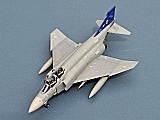
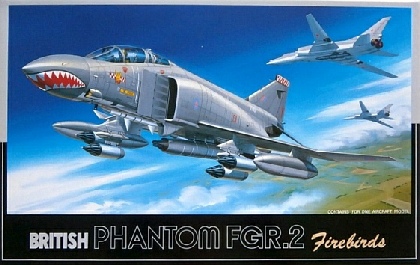
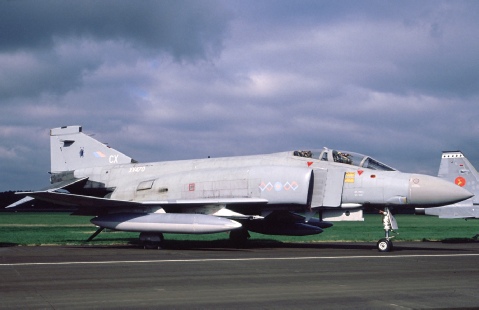
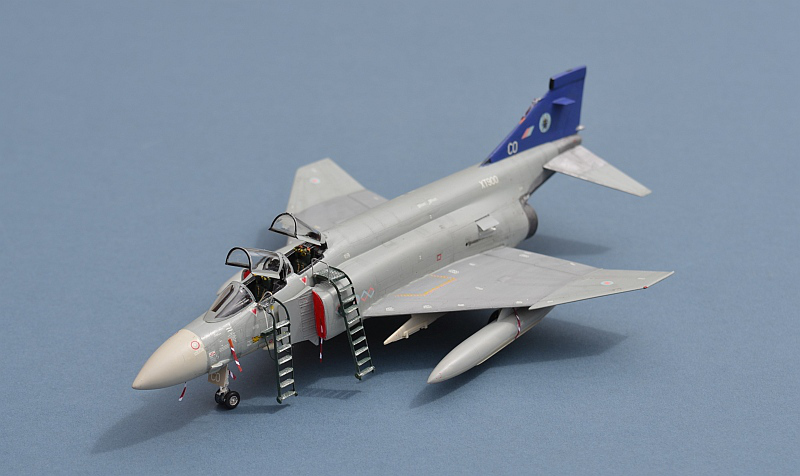
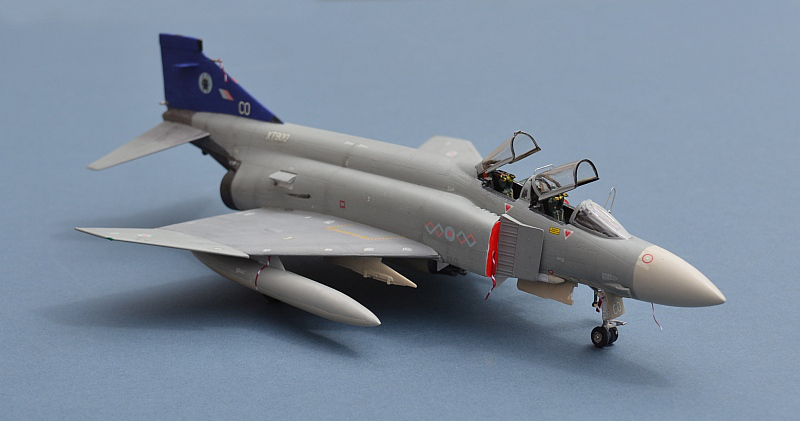
The real thing: 228 OCU Phantoms (photos Wikipedia)
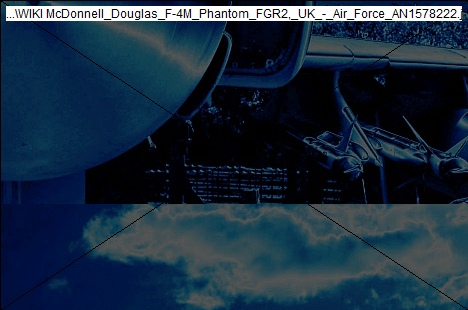
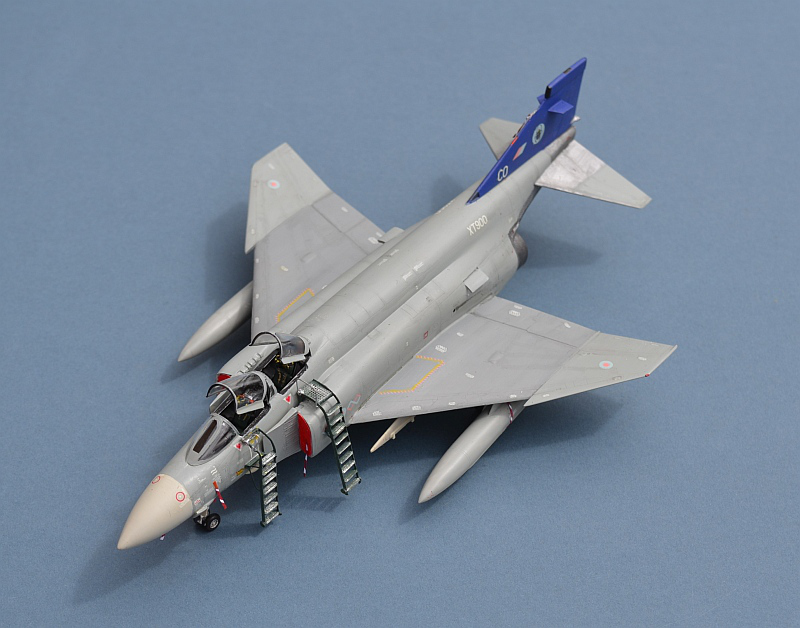
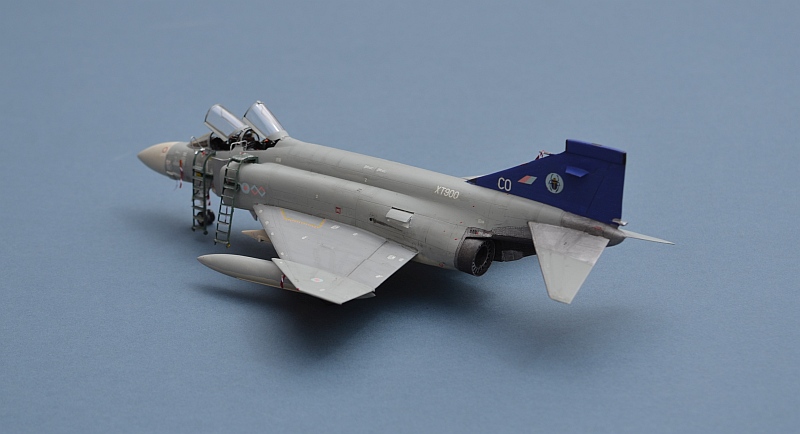
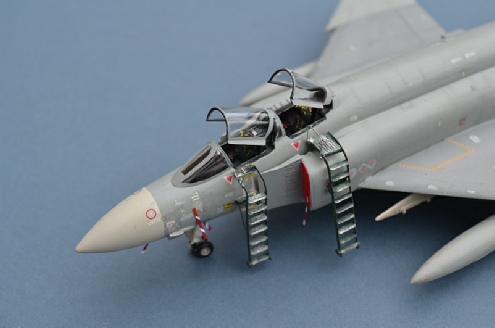
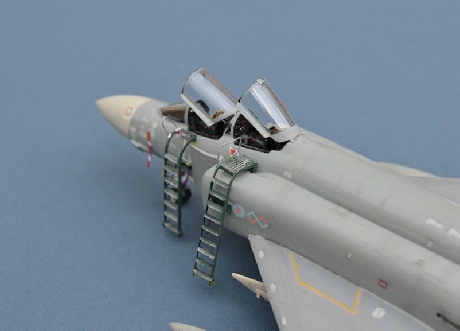
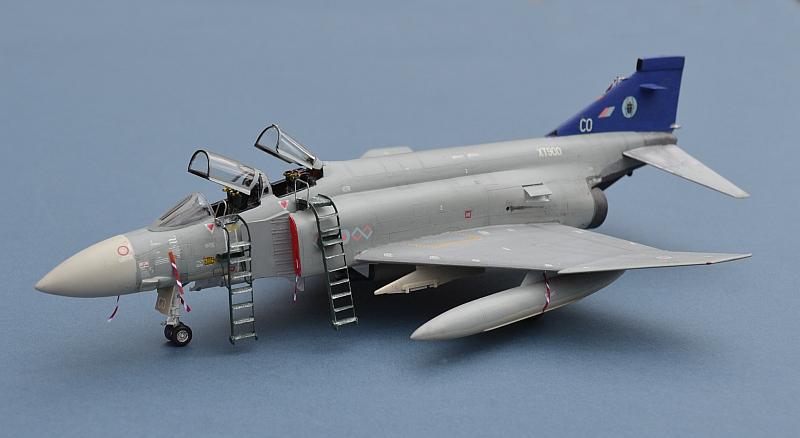
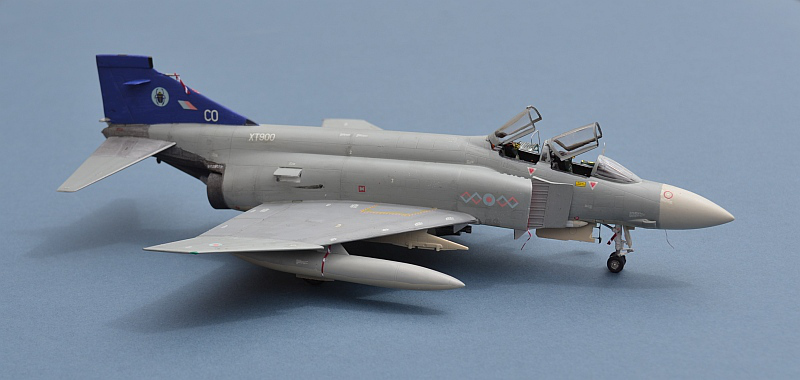
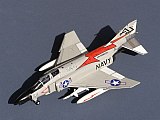
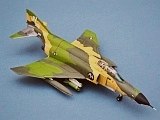
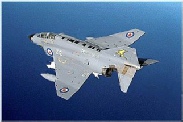

McDonnell-Douglas Phantom F-4J (UK) - F.3
74 Sqn, RAF Wattisham, 1988
italeri 1/72 with Kits-World markings and scratch changes

At the end of the Falklands war in 1982, as naval aircraft withdrew, a permanent
land-based Falklands defence detachment was established, initially at Stanley Airport,
then at the new purpose built RAF Mount Pleasant complex. To cover the withdrawal
of these aircraft from UK Air Defence and as a stop-gap to mitigate development problems
with the F.2 and F.3 Tornado replacements, in 1984 the UK MOD procured 15 ex-US Navy
F-4J aircraft to form a new Southern QRA Squadron, no 74 “Tiger” Squadron at RAF
Wattisham.
The aircraft were carefully selected from US Reserve stocks at Davis-Monthan Air
Base to ensure low airframe hours and good condition, then partially updated to the
latest US Navy F-4S standard, giving them a radar system with similar capabilities
to the US Navy’s F-14 Tomcat. As they also had the original US J79 engine, their
operating ceiling and high level performance was much better than the UK Spey-engined
variants. Some UK avionics were fitted and the aircraft were modified to be compatible
with UK Skyflash missiles.
The F-4J (UK remained in service with 74 Sqn until early 1991, when they were replaced
with low-hours FGR.2s.
One of the UK machines was subsequently re-painted in her Vietnam-era US Navy colours
and is displayed at IWM Duxford.
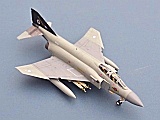
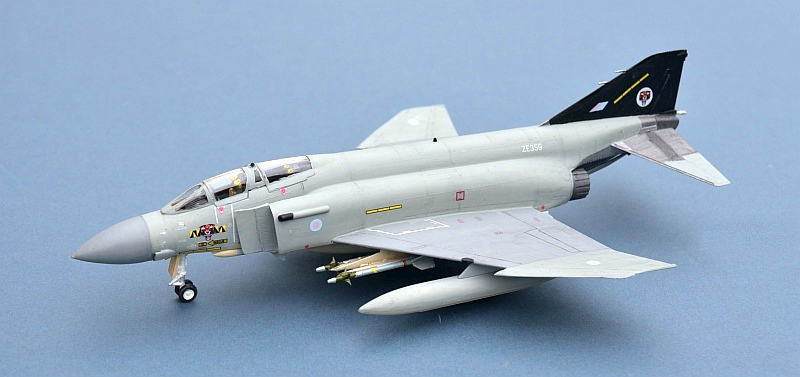
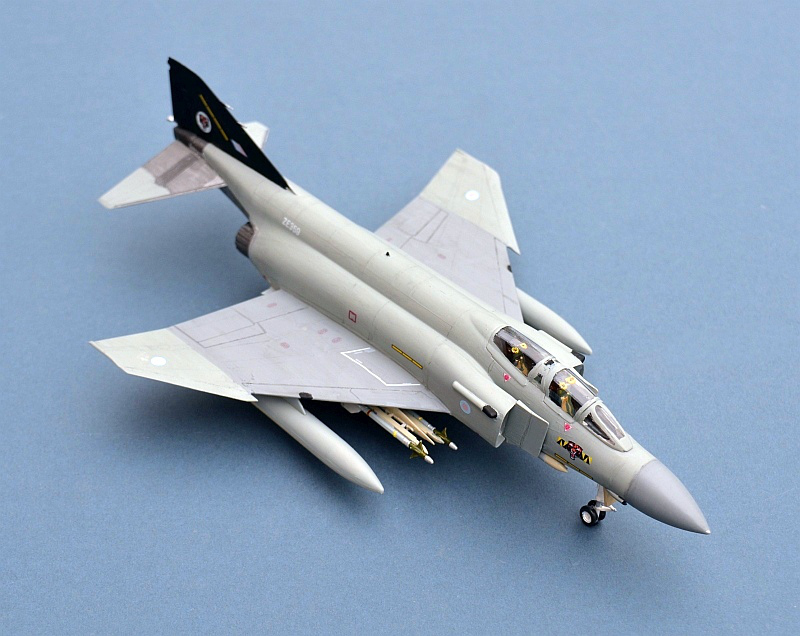
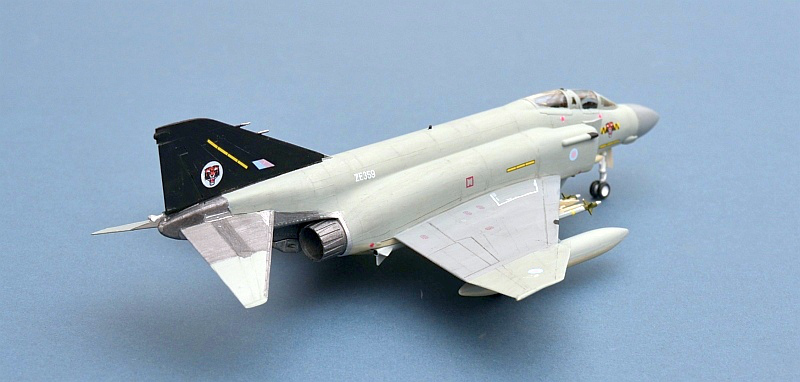
Building The Italeri Phantom as an F4J(UK):
This was a spur of the moment decision and not entirely well conceived; whilst researching
the FGR.2 above, I decided it would be good to have an F-4J(UK) in the collection.
Then I remembered that I had an Italeri F-4S picked up cheaply one year at Telford
a few years back.
I knew the F-4J(UK) had been modified to “nearly” F-4S standard, so thought this
would be easy! It wasn’t until I assembled the wings that I noticed they were fitted
with prominent extended combat slats on the outer sections. Sadly,despite my frantic
searches online to try to prove otherwise, it seems this was the “nearly” F-4S update
that wasn’t actually done on the UK aircraft. After sleeping on the problem overnight
and spotting several rather expensive ESCI F-4J(UK) kits on e-bay, I decided to do
the un-Mods myself.
So the offending slats were cut off with a razor saw and replaced with plastic card
leading edge flaps, faired in and smoothed out with Tippex as a filler. It worked,
although they are a little fragile in just the position where you are likely to pick
the kit up (ask me how I know!).
The Italeri kit is not as nice as the Fujimi ones. Fit is OK, but the main undercarriage
is very simplified. Panel lines are lightly raised, except for those that are very
deeply engraved! The cockpit has plusses and minuses over the Fujimi. I think the
layout is slightly better, but it doesn’t have a full floor and the canopy is in
4 parts, but without any tabs allowing you to display it open….. and it doesn’t fit
well together closed!
Intake joints were very similar to Fujimi - careful assembly is needed to avoid gaps.
I added the lower fuselage section after the intakes and once more this seems to
help. As with Fujimi, I needed a little filler behind the forward undercarriage
bay, but none was needed elsewhere. Wing tanks and weapons were nice and the separate
nose section went together well and was easily faired in with a little sanding, after
the addition of some lead shot to keep it on its nose.

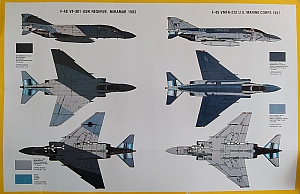
All in all, not as good as Fujimi or the new Airfix, but not a bad kit, roughly to
a similar standard as the Hasegawa 2nd generation F-4E kits. Its “out the box” decals
look nicely printed and cover some interesting late USNR and USMC aircraft.
The Kits-World decals were a little disappointing, mainly due to a lack of placement
diagram, especially on the fuselage sides. Some I worked out from a Modeldecal diagram,
but others were too small to read, especially on white backing paper, so that I couldn’t
determine what they were or where they should go.
Those that I did apply were nicely thin though and settled well with a little Klear.
I thought the yellows looked a bit insipid, but apart from the ”J” on the rudder
(trust me its there) which cant be seen, they look OK once applied.
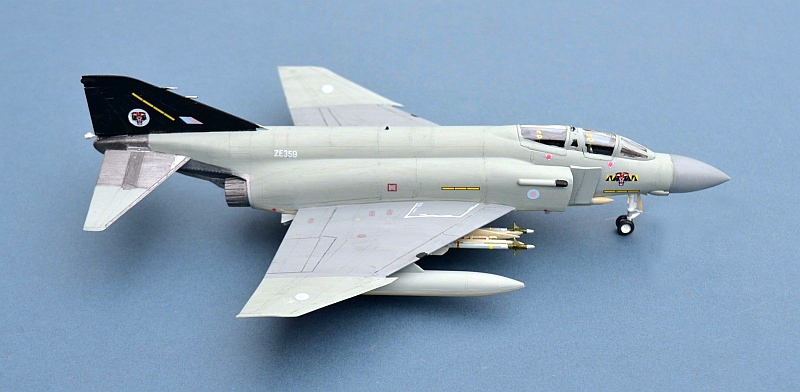
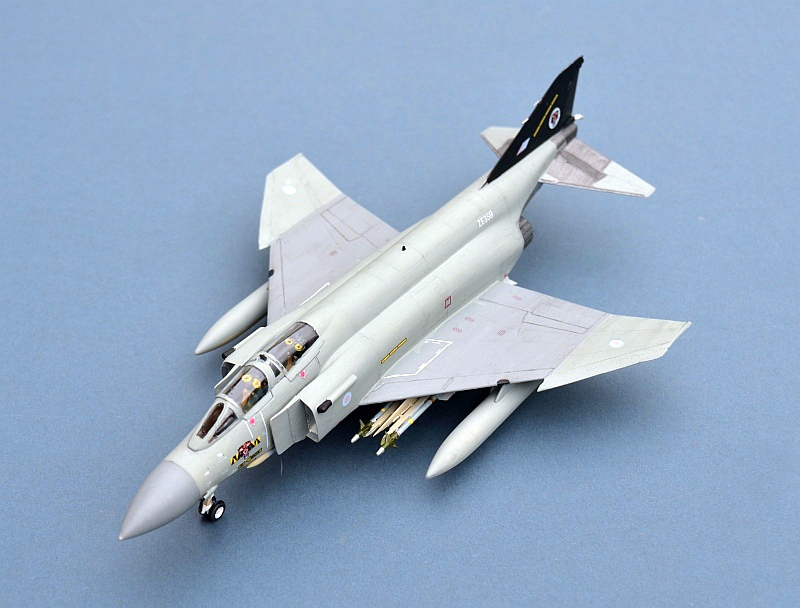
The real thing: 74 Sqn Phantoms (photos Wikipedia)

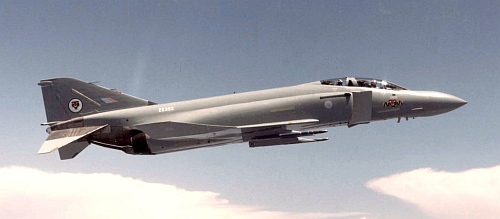
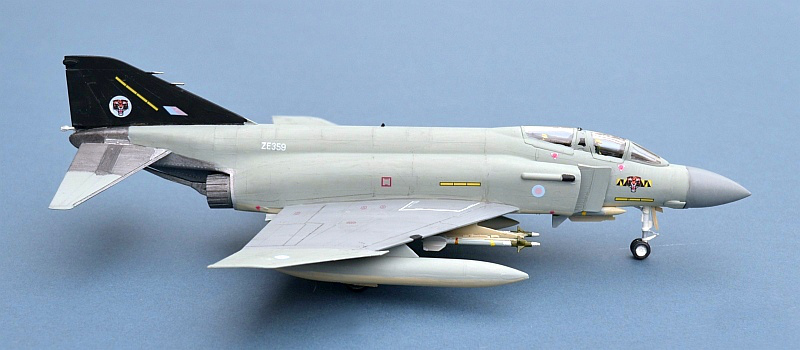
The real thing: Various Museum Phantoms around the UK (photos © Gengriz).
The pristine USN F-4J at Duxford shown below is in fact an ex RAF F-4J (UK), formerly
XE359, the very same aircraft depicted by my model!
